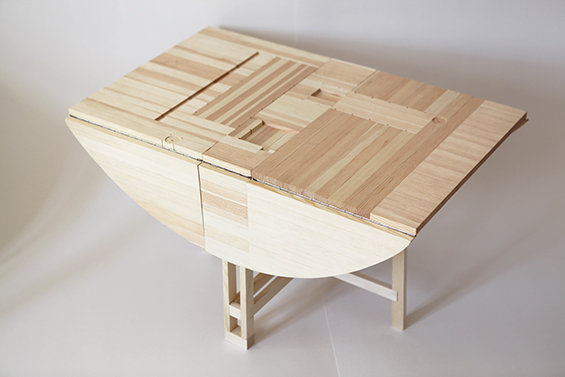Motherboard: A Collective Territory
POSTED ON: September 16, 2022

This post—the second in a series highlighting projects from At the Intersection of Ideas and Material Conditions—features Motherboard: A Collective Territory, by Ida Flarup and Maria Mengel, faculty at the Royal Danish Academy.
The exhibition, currently on viewing the Third Floor Hallway Gallery, is part of an ongoing dialogue between faculty and students of The Irwin S. Chanin School of Architecture and the Institute of Architecture and Culture at the Royal Danish Academy. Faculty work from both schools was recently shown in Practices of Risk, Control, and Productive Failure, an exhibition held at the Brønshøj Water Tower in Copenhagen, Denmark from May 17 to June 10, 2022.
The project, as described by Flarup and Mengel:
The table: We gather around it; sharing meals, ideas and disagreements, playing games, making plans. It is a tool for civilizing human interaction. It is the most common object framing our daily routines and rituals, as well as a stage for starting wars and negotiating ceasefires. It is an architectural gesture, a construction lifting the ground, establishing a framed territory for social interaction.
Motherboard—a central point for connection and memory—is simultaneously a physical table and a scale model of the former seaplane hangar at Holmen in Copenhagen, which now houses 150 students of architecture. The spatial gesture of the hangar—its large, open, flexible space invites us to experiment with teaching formats and encourage a culture of collaborative practices. Motherboard is the beginning of a conversation about this shared territory. It is an object, a memory, and a place for making things—together.
The table can be folded and extended into various positions, thereby changing the social dynamics around it. It is portable, which makes it possible to establish the hangar territory in various external contexts. We ask: Can the table hold a memory of a unique culture which can be unfolded elsewhere? What makes ‘a culture’ and what role do space and objects play.

Ida Flarup and Maria Mengel are architects and teaching associate professors in the Royal Danish Academy’s BA program Finder Sted/Taking Place, located in the seaplane hangar at Holmen.
Alongside their teaching collaborations at the Academy they have founded the studio VAERK>STED and cofounded the exhibition space Modtar projects, focusing on craft and direct, spatial sketching in 1:1 scale. The Danish word ‘omforandring’ can be seen as a common denominator for their practice. It translates to ‘change’ and ‘transformation,’ but it also connotes craft, and can therefore be explained with words like alter, reorganize, renovate, adapt, repair, and modernize.




